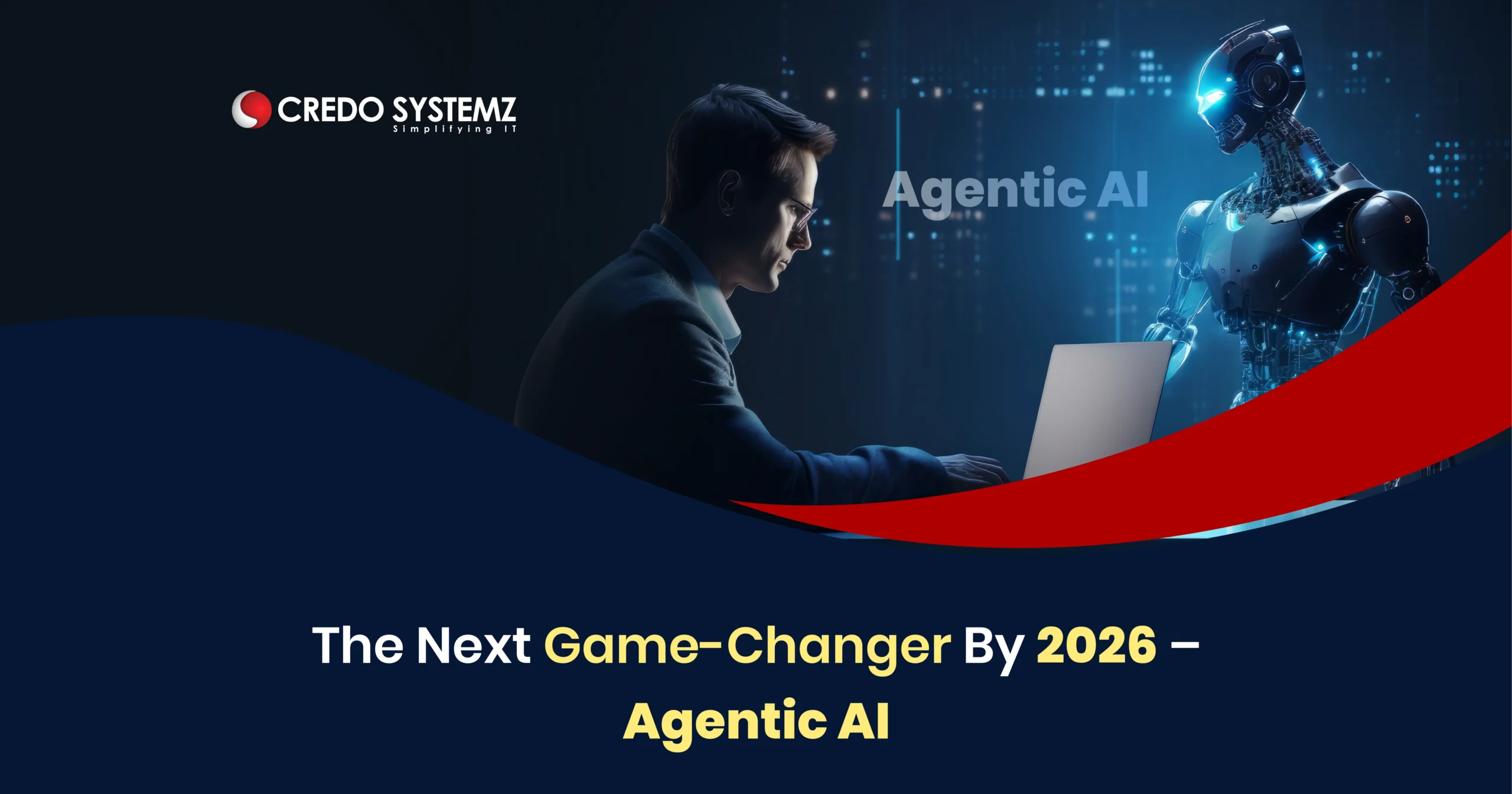
The Agentic AI is making the shift from smart autocomplete to software that sets goals, plans, takes actions, and learns from the outcomes. While generative AI wrote drafts and answered questions, agentic AI gets work done across apps, data sources, and organizations. By 2026, Agentic AI will be the operating layer for how digital work happens.
What makes AI “agentic”?
Traditional GenAI focuses on responding to prompts, producing outputs in one shot and needs humans to orchestrate tools. On the other hand, Agentic AI understands goals and breaks the goals into tasks, chooses tools and executes. It also monitors feedback, self-corrects, keeps memory of context and preferences. AI agents can collaborate with other agents and humans in a loop.
Why 2026 is the inflection point
- With open connectors, API catalogs, and function-calling frameworks, AI agents can use apps safely.
- Long-horizon reasoning improves by adopting better planning, reflection, and retrieval reduce hallucinations and task drift,
- Cheaper, faster models. Persistent agents can watch systems and act continuously,
- Governance catches up: Policy guardrails mature, unlocking enterprise adoption,
- Native “agent modes” in major platforms. Productivity, CRM, cloud, and DevOps tools are shipping agent interfaces rather than chatbots.
High-impact use cases you’ll see by 2026
Autonomous Ops & IT
- Ticket-to-fix loops: Agents diagnose alerts and roll back bad deployments,
- Rightsize cloud resources and kill idle spend with policy-aware changes,
- Agents patch known vulns, rotate keys, and verify remediations.
Back-office Automation
- Finance: Reconcile at month-end, chase AR, detect anomalies, prepare close packages.
- Procurement: Source vendors, draft RFPs, evaluate bids against policy, maintain vendor scorecards.
Product & Engineering
- Issue swarms: Agents triage bugs, propose patches, open PRs and run tests.
- Roadmap research: Monitor user feedback, usage telemetry to propose prioritized specs.
Knowledge Work at the Edge
- Field service: Schedule, route, and pre-stage parts.
- Healthcare admin: Prior auth submissions, coding suggestions, insurance follow-ups.
Want to know more about the course curriculum, career counseling, or video references? Just ping us on WhatsApp!
What an agent actually does
AI agents will start their work by goal intake and move on to plan. It involves task tree creation and following it by calling tools. Check metrics, logs and compare to goal and guardrails.
If success < threshold, try an alternative. Create an auditable activity log and a human-readable summary. All of this runs in a policy sandbox with least-privilege access and test environments first. Automatic approvals where risk is low and human approval where risk is high.
Metrics that matter
By 2026, successful teams will measure agents by:
- Task success rate (TSR): % of tasks completed without human help
- Intervention rate: % of runs requiring human approval or correction
- Time-to-value: Seconds/minutes from trigger to completion
- Cost per successful task: Model + infra + tool calls / completed tasks
- Drift & error taxonomy: Clear labels for why failures happen
Risks to manage
- Over-automation: Agents can move fast in the wrong direction.
- Data leakage: Retrieval and tool calls must respect confidentiality and legal boundaries.
- Vendor lock-in: Favor open connectors and portable playbooks to avoid re-platform pain.
- Change management: Success depends on trust—communicate transparently, document wins, and invite feedback.
A realistic 2026 snapshot
Mid-market companies will run 5–20 production agents in which each owning a clear KPI. CIOs budget will be allocated for an Agent Platform alongside data and integration platforms.
Job postings will add Agentic AI skills like playbook authoring, policy design, agent observability. Compliance teams review agent activity logs like they review financial controls.
Join our exclusive WhatsApp group to get instant updates on career trends, training programs, and in-demand skills.
👉 Join here: Click to Join
Conclusion
By 2026, agentic AI will shift organizations from answer engines to action engines. The Agentic AI models will codify their playbooks, wire up safe tool access, and measure outcomes relentlessly. Start small, measure hard, and scale what works. The future of work isn’t just assisted—it’s orchestrated. To join the AI advancements, join Credo Systemz AI courses to gain AI literacy.
Join Credo Systemz Software Courses in Chennai at Credo Systemz OMR, Credo Systemz Velachery to kick-start or uplift your career path.
Agentic AI – FAQ 2026
Traditional AI/chatbots provide answers or suggestions whereas Agentic AI goes further by executing workflows end-to-end.
High-impact sectors include:
- IT & Operations
- Sales & Marketing
- Finance & Procurement
- Healthcare & Field Services
Yes, if implemented with guardrails like role-based access, policy checks, human approval gates, and full audit trails.
Organizations should:
- Identify 2–3 repeatable, high-volume workflows and document policies in machine-readable formats
- Set up observability (logs, metrics, dashboards)
- Pilot agents with human-in-the-loop review
- Train teams on writing playbooks and monitoring agent behavior
